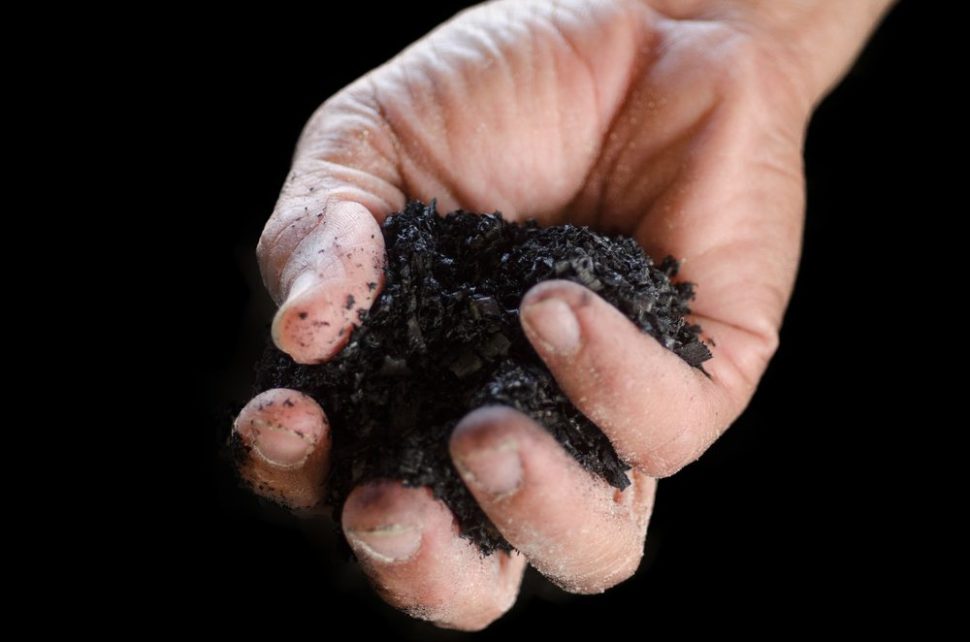New research has shed light on the chemistry that creates an organic carbon coating around biochar and how that significantly improves its fertilizing properties.
Biochar isn’t new, but new insights make it commercially viable and reinforce its environmental sustainability.
Unlike charcoal energy application, biochar is used as a fertilizer. Compared to other soil additives, biochar can be applied only once but with a lasting effect.
Biochar is produced from the pyrolysis of biomass, or the thermodegradation of organic matter, such as wood, vegetable waste, crop residues, as an anaerobic process.
Organic coating gives biochar its miraculous fertilizer enhancing capacity.Click To TweetBiochar was first discovered in the Amazon under the name Terra Preta, which means “black soil” in Portuguese. Pre-Columbian civilizations in Amazonia that lived in the rainforests used biochar for over 25 centuries to enrich the acidic soils.
Understanding Biochar
Biomass residues naturally decompose by emitting carbon dioxide. A transformation into a stable biochar could be buried in the soil and thus eliminate this natural process while also improving the agronomic properties of the soil.
Aside from being hailed as a revolutionary method of atmospheric CO2 sequestration, biochar could at the same time amplify the action of conventional fertilizers.
The potency of biochar as a soil additive was thought by scientists to be due to its high-porosity that traps nutrients and releases them slowly.
However, the precise chemistry underlying biochar’s sorption capacity (retention and release, specifically in the case of nutrients) wasn’t well understood.
Now, an international team of researchers has finally shed light on biochar chemistry.
Since 2010, the University of Tuebingen in Germany has been conducting the Biochar Project, which has been the subject of several undergraduate and graduate theses.
Other than in-house research, the University of Tuebingen also teamed up with other national and international universities, such as the University of Forestry in Rottenburg in Germany, and the Delinat Institute in Switzerland.
How Organically-Coated Biochar Improves Crop Yields
Recently, a study led by Andreas Kappler from the University of Tuebingen and geomicrobiologist Nikolas Hagemann received significant contributions from researchers at Colorado State University.
The team analyzed biochar before and after composting with manure then conducted a series of microscopic and spectroscopic analyses.
According to the study’s findings, it’s the composting of biochar that creates a thin carbon-coating that gives it its miraculous fertilizing properties.
The organic coating enhances the biochar’s ability to store nutrients, such as nitrates and phosphates, and it strengthens interactions between biochar and the soil leading to the slow release of nutrients.
“Our data provides, for the first time,” said authors of the study published last October in Nature Communications, “mechanistic evidence on a molecular scale as to why the combination of biochar and organic amendments yields optimal agronomic benefits by biochar amendment.”



















Comments (0)
Least Recent